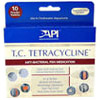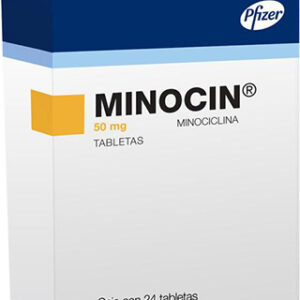Overview of Tetracycline
Tetracycline is a broad-spectrum antibiotic belonging to the class of medications known as tetracyclines. It works by inhibiting protein synthesis in bacteria, effectively stopping their growth and replication. Tetracycline is used to treat a wide variety of bacterial infections, including respiratory tract infections, acne, urinary tract infections, sexually transmitted diseases, and certain types of gastrointestinal infections.
Chemical Composition
Tetracycline hydrochloride is the hydrochloride salt of the polyketide antibiotic tetracycline. The chemical formula is C22H24N2O8•HCl, with the molecular weight of 480.90 g/mol. It is commonly found as a yellow crystalline powder, soluble in water and slightly soluble in alcohol.
Pharmacokinetics
Following oral administration, tetracycline is absorbed in the gastrointestinal tract. Absorption can be significantly impaired by the presence of divalent and trivalent cations such as calcium, magnesium, and iron found in dairy products and certain antacids or supplements. Hence, it is recommended to administer tetracycline at least 1 to 2 hours before or after meals or consumption of these products. Peak serum concentrations are typically reached within 2 to 4 hours. Tetracycline is widely distributed in body fluids and tissues, including the liver, spleen, kidneys, and, bones. It is partially metabolized in the body and excreted primarily in the urine with some fecal excretion as unchanged drug.
Indications for Use
Tetracycline is indicated for the treatment of various infections caused by susceptible strains of bacteria. These include infections of the respiratory tract, genitourinary system, skin and soft tissues, and gastrointestinal system among others. It also has specific indications for the treatment and prevention of anthrax, certain rickettsial infections, and as adjunctive therapy for severe acne.
Dosage and Administration
Dosage of tetracycline varies depending on the severity and type of infection, as well as patient factors such as age and renal function. The usual adult dose ranges from 500 mg to 1 g every 6 to 12 hours, taken orally with a full glass of water. Dosages should be adjusted for patients with renal impairment. For children older than 8 years of age, the standard dose is 25 to 50 mg/kg per day divided into four equal doses. Treatment duration depends on the type and severity of infection but generally ranges from 7 to 14 days.
Drug Interactions
Tetracycline can interact with a variety of drugs, such as:
- Penicillin antibiotics, which may reduce the bactericidal effect of penicillins when used concurrently.
- Antacids containing aluminum, calcium, or magnesium, and iron supplements severely decrease the absorption of tetracycline.
- Oral contraceptives, as tetracycline may reduce the effectiveness of oral contraceptives.
- Warfarin and other oral anticoagulants, since tetracycline may potentiate their effects.
Patients should be advised to disclose their full medication list to their healthcare provider to avoid potential interactions.
Contraindications
Tetracycline is contraindicated in patients with known hypersensitivity to tetracyclines. It should also not be used in children under the age of 8 due to the risk of permanent tooth discoloration and enamel hypoplasia. Its use is contraindicated in pregnant women and nursing mothers as it can affect fetal bone and tooth development and can pass into breast milk.
Adverse Effects
Common adverse effects of tetracycline include gastrointestinal disturbances such as nausea, vomiting, diarrhea, and anorexia. Tetracycline may also cause photosensitivity, leading to an increased risk of sunburn. Other side effects can include dizziness, headache, and discoloration of teeth if used in children or during the second and third trimesters of pregnancy. Rarely, severe adverse effects such as hepatotoxicity and blood dyscrasias might occur.
Monitoring Parameters
Patients on tetracycline therapy should be monitored for clinical improvement of the infection. Renal and hepatic function should be monitored periodically during prolonged therapy. In the event of long-term use, regular dental check-ups should be recommended to detect any evidence of dental discoloration or enamel defects.
Storage and Stability
Tetracycline should be stored at room temperature, between 15 to 30°C (59 to 86°F), and kept away from light and moisture. It should be dispensed in a tight, light-resistant container. Solutions of tetracycline for injection should be used immediately after preparation as they are not stable for extended periods.
Dispensing Information
When dispensing tetracycline, pharmacists should ensure the medication is provided with a patient information leaflet and advise patients on the correct timing of doses in relation to meals and other medications. It is vital to counsel patients on the potential for photosensitivity and the importance of using sun protection. Additionally, patients should be informed of the signs and symptoms of potential serious side effects and advised to seek immediate medical attention if they occur.






Reviews
There are no reviews yet.